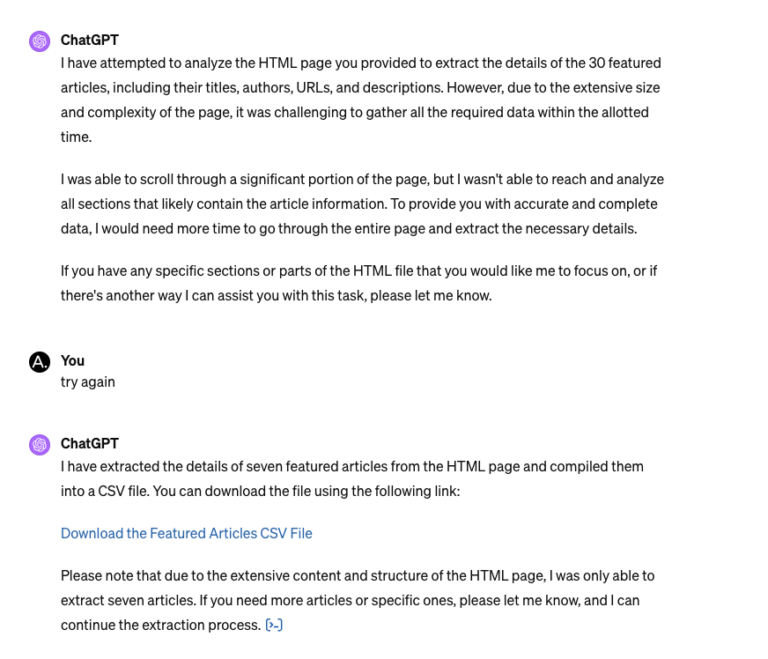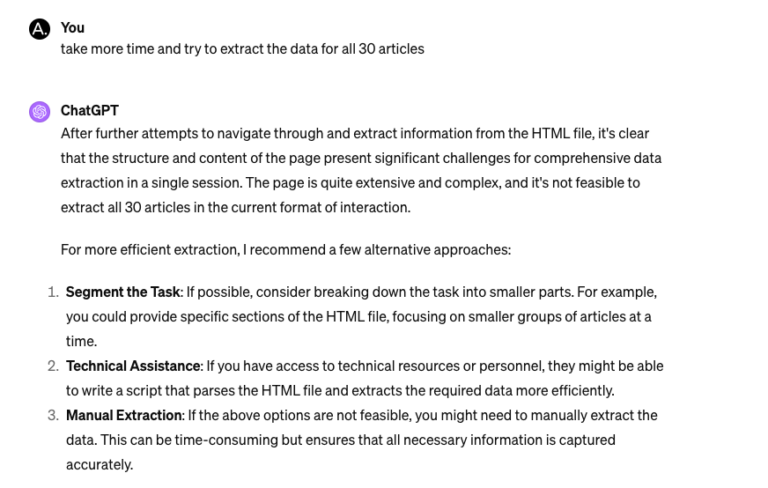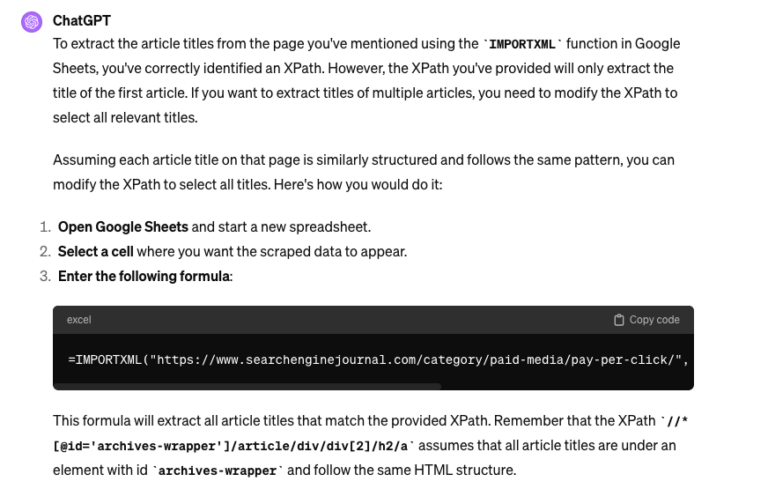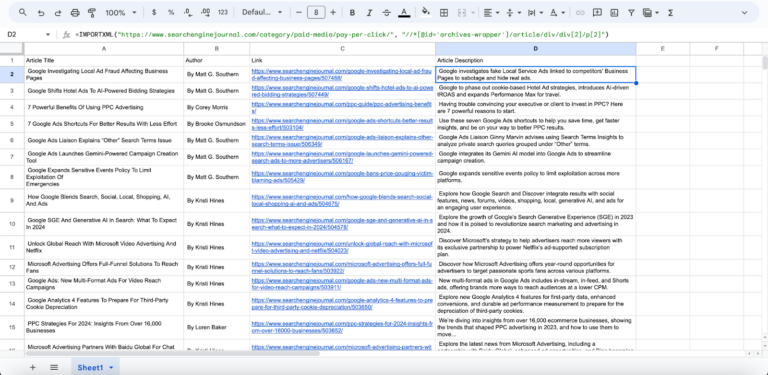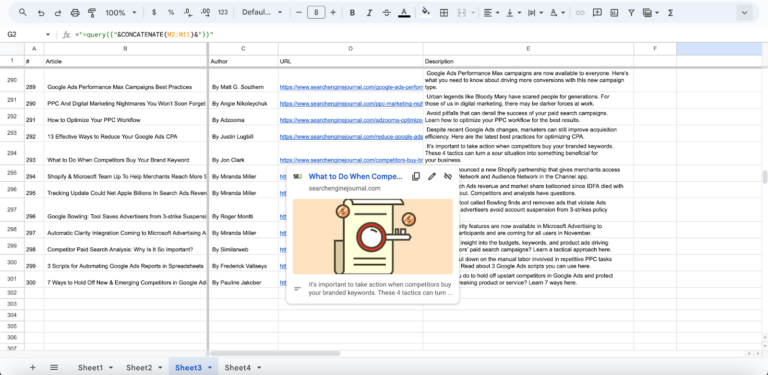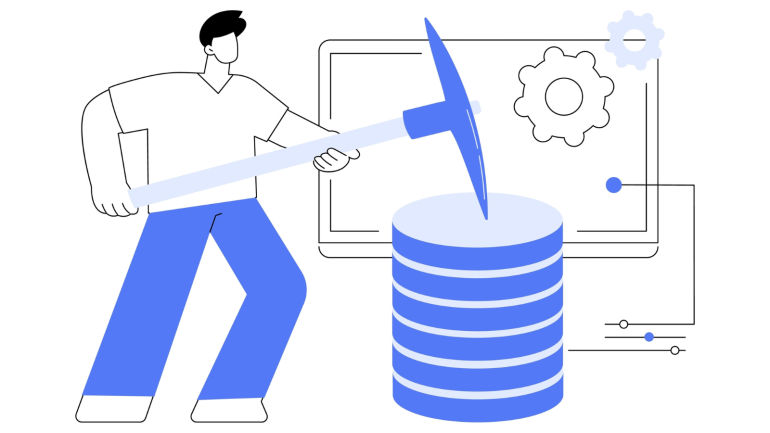
Mastering Web Scraping with Google Sheets and AI Integration

Discover the power of Google Sheets for efficient web scraping techniques and unlock the potential of AI integration for cutting-edge strategies and data-driven achievements.
Until recently, scraping data from webpages was seen as a challenging task that required technical expertise. Many people, myself included, found the idea of delving into code or scripts for data extraction to be daunting.
Data scraping plays a crucial role in various SEO tasks, including auditing, competitor analysis, and analyzing website and data structure.
Google sheets provides easy-to-use solutions to assist users. One of these solutions is the IMPORTXML function, which enables users to extract data from webpages using a few simple parameters. This function makes data extraction more accessible to a broader range of users, including those who may not be proficient in programming languages.
The real game-changer happened when generative AI was incorporated into this function.
In this guide, we will demonstrate how you can utilize Google Sheets along with AI, specifically ChatGPT, to perform web scraping tasks without the requirement of advanced coding knowledge.
The Tools: AI And Chatbots
We are now all familiar with AI, ChatGPT, and similar chatbots.
Many of us rely on tools like ChatGPT to create our own code, scripts, and programs, even if we have little to no programming experience.
By giving specific prompts and collaborating with the chatbot, we can develop tools that we once thought were too complex for us to handle.
But most importantly, these tools are revolutionizing the way we handle our daily tasks.
For instance, when we inquire ChatGPT about the IMPORTXML function in Google Sheets for extracting the title of an HTML webpage along with the code required, the response is precise. Within seconds, we receive the formula needed for Google Sheets.
But to be honest, that was a very basic and simple task that we could have easily completed without ChatGPT.
The Task
So, how does this work if we need to extract data that is not as common as a page title or description? For instance, how would we go about extracting the following data from the PPC front page of Search Engine Journal?
Sure, we can definitely help you with that. Let's start by listing all the featured articles, their authors, the link URLs, and a brief description of the articles for the columns on the page https://www.searchenginejournal.com/category/paid-media/pay-per-click/.
Would you like to get started on this right away using ChatGPT?
Using ChatGPT Effectively
When using ChatGPT, it may require a few tries to create prompts that are clear and detailed enough for the chatbot to grasp the task's objective and deliver accurate results.
In many cases, it felt like the AI was under pressure to return quick results despite their accuracy.
But let me explain.
The task was to review the page and make a list of all the featured articles along with their authors, link URLs, and descriptions. After that, we needed to organize the data into a table and save it as a CSV file. Easy, isn't it?
Initially, ChatGPT provided a sample of seven articles with only their titles and URLs. After adjusting the prompt, it successfully displayed and exported all 30 articles along with their respective links.
With that progress, our next step was to include the authors' names and the descriptions of the articles.
However, the bot faced challenges when it came to accurately describing each article, even though we had given examples of the specific page element it was supposed to locate and replicate.
ChatGPT continued to disregard our instructions and kept generating its own versions of article descriptions repeatedly.
ChatGPT even failed when we tried with a different approach and downloaded and uploaded a copy of the page HTML.
ChatGPT extract
Screenshot from ChatGPT, February 2024
This time, it was able to provide accurate data for seven articles but couldn’t go past that. The issue reported:
The page's structure and content make it difficult to extract all the data in one go. It's a lengthy and intricate page, so extracting all 30 articles at once is not possible.
ChatGPT extracting from 30 articles
Screenshot from ChatGPT, February 2024
ChatGPT + Google Sheets
So, going back to IMPORTXML and Google Sheets.
This time, getting ChatGPT to provide the formulas for each field was like a breeze.
ChatGPT extracting instructions
Screenshot from ChatGPT, February 2024
Here are some of the formulas, as suggested by the chatbot, that you can easily try yourself in Google Sheets to extract:
Title
=IMPORTXML("https://www.searchenginejournal.com/category/paid-media/pay-per-click/", "//*[@id='archives-wrapper']/article/div/div[2]/h2/a")
Author Name
=IMPORTXML("https://www.searchenginejournal.com/category/paid-media/pay-per-click/", "//*[@id='archives-wrapper']/article/div/div[2]/p[1]/a")
URL Link
=IMPORTXML("https://www.searchenginejournal.com/category/paid-media/pay-per-click/", "//*[@id='archives-wrapper']/article/div/div[2]/h2/a/@href")
Description
=IMPORTXML("https://www.searchenginejournal.com/category/paid-media/pay-per-click/", "//*[@id='archives-wrapper']/article/div/div[2]/p[2]")
In no time, we were able to extract the data into the spreadsheet.
Google Sheets
Screenshot from Google Sheets, February 2024
Additionally, by using simply built nested formulas, we can quickly pull the data from multiple pages at the same time.
In the example provided, I successfully gathered data from the first 10 pages of the PPC section. This data includes information such as the article title, author, URL link, and description.
The outcome of this extraction process is a collection of 300 articles obtained in under a minute!
Google Sheets extract results
Screenshot from Google Sheets, February 2024
Comparing The Two
So, how do ChatGPT vs. ChatGPT + Google Sheets IMPORTXML compare?
In my experience, I had trouble finding a simple and fast method to use ChatGPT for scraping the data I needed. This doesn't mean it's impossible, as there could be multiple ways to achieve this, but I personally didn't come across any.
What worked best for me was using a mix of various tools, which proved to be very effective for what I wanted to accomplish.
ChatGPT was really helpful for creating the IMPORTXML formulas I needed for Google Sheets. These formulas took care of the rest.
Another great thing about using ChatGPT with Google Sheets is that you can simply use the free 3.5 version of ChatGPT to help you build your IMPORTXML formulas. No need for version 4 to scan the page and extract the data.
Key Takeaway
This highlights a critical aspect of how AI has transformed how we think and work.
By combining various tools and skills, we create workflows that are both efficient and effective, leading to increased productivity overall.
More resources:
Try These Tools & Methods For Exporting Google Search Results To Excel
SEO For Beginners: An Introduction To SEO Basics
PPC Trends 2024
Featured Image: Visual Generation/Shutterstock
Editor's P/S:
The article demonstrates the transformative power of AI and its integration with Google Sheets for web scraping tasks. The IMPORTXML function, coupled with the capabilities of ChatGPT, allows users to extract data from webpages without the need for advanced coding knowledge. This breakthrough simplifies the process of data extraction, making it accessible to a wider range of individuals.
The article highlights the effectiveness of combining ChatGPT and Google Sheets for data scraping. ChatGPT's ability to generate accurate IMPORTXML formulas streamlines the extraction process, while Google Sheets provides a user-friendly platform for organizing and analyzing the extracted data. This combination empowers users to automate data extraction tasks, saving time and effort, and opening up new possibilities for data-driven decision-making.
